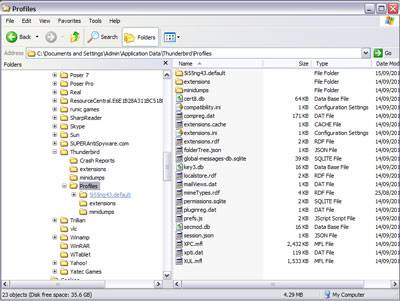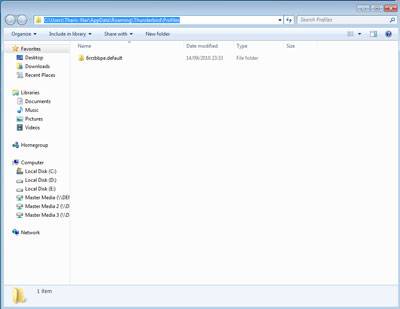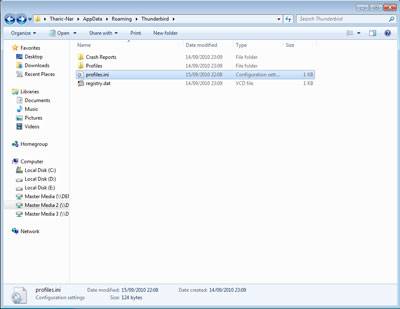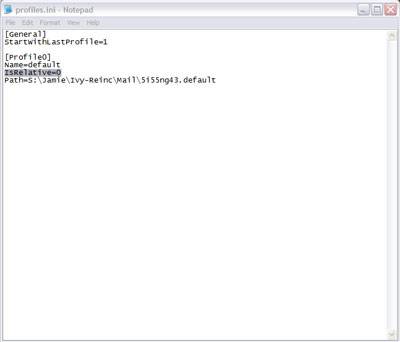- Qualcomm Launches Snapdragon 4 Gen 2 Mobile Platform
- AMD Launches Ryzen PRO 7000 Series Mobile & Desktop Platform
- Intel Launches Sleek Single-Slot Arc Pro A60 Workstation Graphics Card
- NVIDIA Announces Latest Ada Lovelace Additions: GeForce RTX 4060 Ti & RTX 4060
- Maxon Redshift With AMD Radeon GPU Rendering Support Now Available
Sharing Your Thunderbird Profiles Between PCs and OSes

If you run multiple computers or different operating systems on the same PC and want access to your email without switching computers or rebooting into a different OS, Thunderbird has the answer. Here’s a quick guide to setting up different Thunderbird clients to access the same profile, no matter which OS or PC you’re connected to.
Although I see its uses, I’m not a fan of webmail. Trying to manage multiple accounts and setting up all of the forwarding and filters can be a tedious process… not to mention a slow one at times due to the sluggish behavior of the browser. So, where available, I like to use a dedicated mail client like Mozilla’s Thunderbird.
Problems arise, however, when it comes to moving the client to a new computer, whilst keeping all of the settings and mail intact. Fortunately, a method available not only allows you to move your mail and profile settings with relative ease, but also share it, allowing multiple clients access to the same profile, regardless of the OS or computer on a given network.
The first thing to do is to locate your current profile. Unfortunately, the full path isn’t going to be similar between OSes, but Mozilla keeps a tidy list of locations on its support site. In my example, I’ll be using Windows XP and Windows 7. You can quickly access the profile location by using the “Run” command from the Start Menu, or by pressing “Windows Key + R” and typing in the following:
%APPDATA%\Thunderbird\Profiles
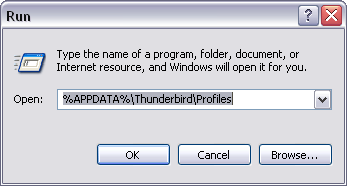
Your profile folder will be different from system to system, but follows the same basic structure of “XXXXXXXX.Name“. Typically, the name will be .default with a random 8 character text string beforehand.
You can copy your profile folder and move it to a more convenient location – even to another computer on the network or a NAS box if you wish. Once you have found and/or moved the profile location, take note of its location. The easiest way is to open the profile folder and copy the address from the address bar, in the Explorer window.
The second stage is to change the location of Thunderbird’s default profile location by editing the “profiles.ini” file. This can be found in the Thunderbird application data folder, which again, changes its location depending on the OS you’re using. Under XP and Vista/7, this can be accessed by going to the run command again and typing:
%APPDATA%\Thunderbird\Profiles.ini
If you are setting up a new client, you will need to make a dummy account in order for the profiles.ini file to be made available. Make a backup before any edits are made, then open the profiles.ini file and make two simple changes.
First, change the IsRelative= flag from 1 to 0, and then change the Path= to the address where your profile is stored (the one you copied above).
When saving profile data on a network, it may be best to map the address as a network drive, otherwise you can use the standard server notation of \Servername\DriveName\Folder\Profile.
Finally, save the file and open Thunderbird. If you are using your existing client, nothing should have changed, and if you are setting up a new client, you should see all your mail and have all your settings and filters enabled. If you are trying to access the same profile over different operating systems on the same PC, it would be best to move the Profile to a new location other than the default, preferably to a separate hard drive with a file structure unencumbered by OS encryption.
That is done so that when accessing your email with a standard user, you won’t need elevated privileges to access another user’s profile data, since with Windows and the NTFS file system, each user space is encrypted and requires administrative privileges to access if you are not logged in as that specific user. If you wish to keep some form of encryption but not controlled by the OS, save the profile data on a virtual drive with something like TrueCrypt.
Just be aware that you will not be able to access the same profile simultaniously from different clients, but it will mean that all clients will be synchronised to the same data. If you run into trouble with our steps, let us know and we’ll be happy to help. Just remember to make backups first before tampering with configuration files… we can’t stress that enough.
Discuss this article in our forums!
Have a comment you wish to make on this article? Recommendations? Criticism? Feel free to head over to our related thread and put your words to our virtual paper! There is no requirement to register in order to respond to these threads, but it sure doesn’t hurt!
Support our efforts! With ad revenue at an all-time low for written websites, we're relying more than ever on reader support to help us continue putting so much effort into this type of content. You can support us by becoming a Patron, or by using our Amazon shopping affiliate links listed through our articles. Thanks for your support!




